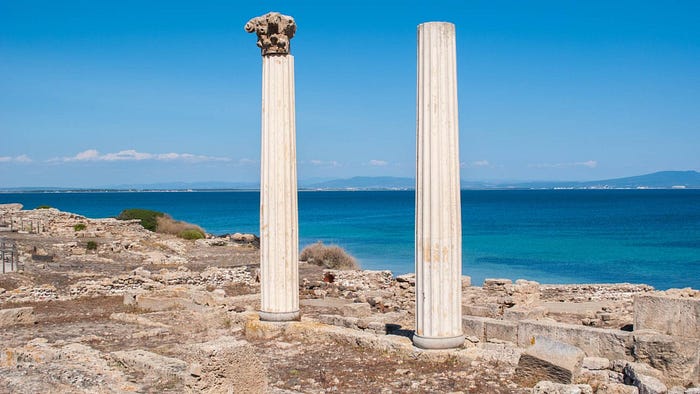Archaeological Sites: Artifacts, Features, Ecofacts, & Context

In a previous post, I answered the top 10 frequently asked questions about Archaeology. Now, in this post, I’d like to talk a little more about the types of evidence that are left behind in the archaeological record. I’ll be talking about archaeological sites, artifacts, features, ecofacts, and context.
Archaeological Sites
Places where traces of human activity are found are called archaeological sites. Sites can be huge, like ancient cities, or very small, such as a scattering of a few stone tools. And, sites can be used for a short period of time, like just a few hours, or for long periods of time, like multiple generations.
There are different kinds of archaeological sites. One kind of site is a burial site. This is a site that contains human remains. Another type of site is called a habitation site. In habitation sites, there are houses, hearths, and other types of domestic activities.
Then there are kill sites, which are made up of the bones of game animals that people slaughtered, and weapons. There are also quarry sites, which are places where people mined stone or metals for making tools. And there are ceremonial and religious sites, where these kinds of activities took place. And there are art sites, which are places where people painted or engraved art. These are just a few examples!
Artifacts, Features, and Ecofacts
Within sites, there are different types of evidence that are found. Things that have been made or modified by humans and are portable are called artifacts. Examples of artifacts include tools, clothing, pottery, and jewelry. If the thing is not portable, like a wall or a hearth or a storage pit, then it is called a feature.
There are also ecofacts. Ecofacts are things that were not made by humans but are important in understanding the archaeological record. They are organic and environmental remains, and examples include animal bones and plant remains. Ecofacts are used to find out things like what people ate, and what the environment was like back then.
Context
All types of archaeological evidence have a context. A context is made up of a matrix, a provenience, and association with other finds. A matrix is the material around a piece of evidence, such as gravel, sand, or clay. Provenience is the horizontal and vertical position in the matrix. Association with other finds means that a piece of evidence is found along with other evidence in the same matrix.
The context of a piece of evidence is very important in understanding it. For example, the interpretation of a piece of pottery will be different if it is found in a house versus a tomb, or in association with tools versus animal bones. The context gives lots of information about the piece of evidence, and artifacts without context are of limited value. This is why looters shouldn’t dig up sites — they don’t record the context and this information is lost forever!
Learn More
Want to learn more about archaeological sites, artifacts, features, ecofacts, and context? Check out this page of the website of the Society for American Archaeology. Also, check out the brochure, “Help Preserve Our Past: Stop Looting of Archaeological Resources” from the USA’s Bureau of Land Management.
Thanks for reading!
